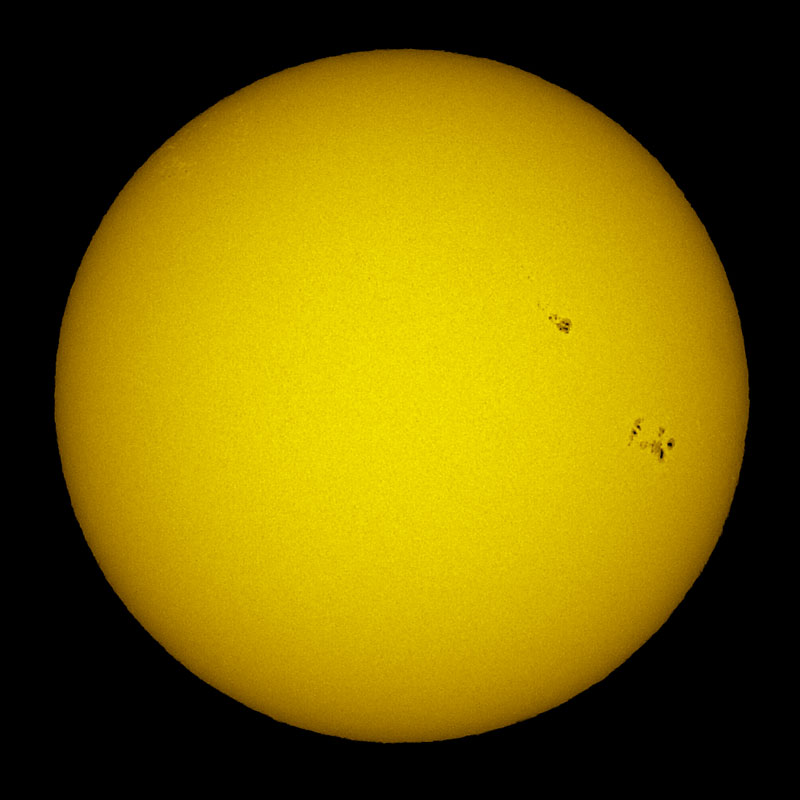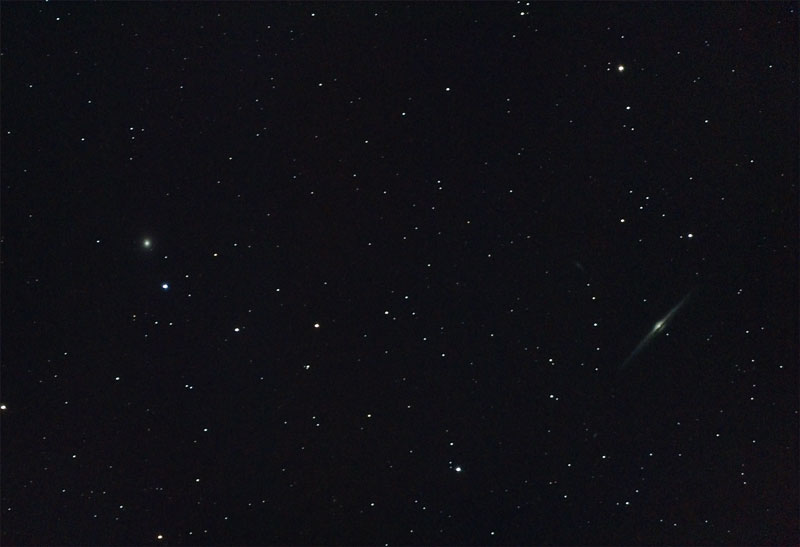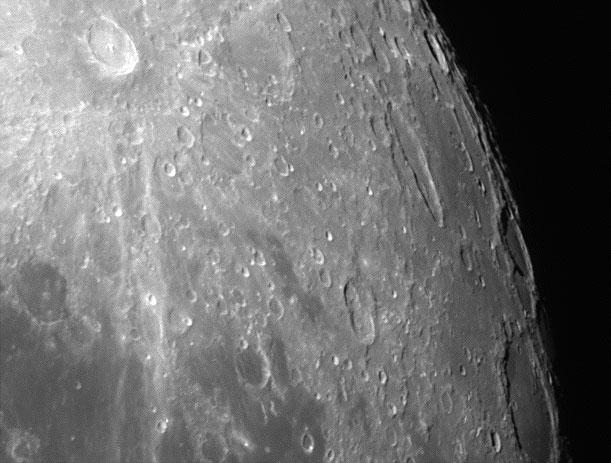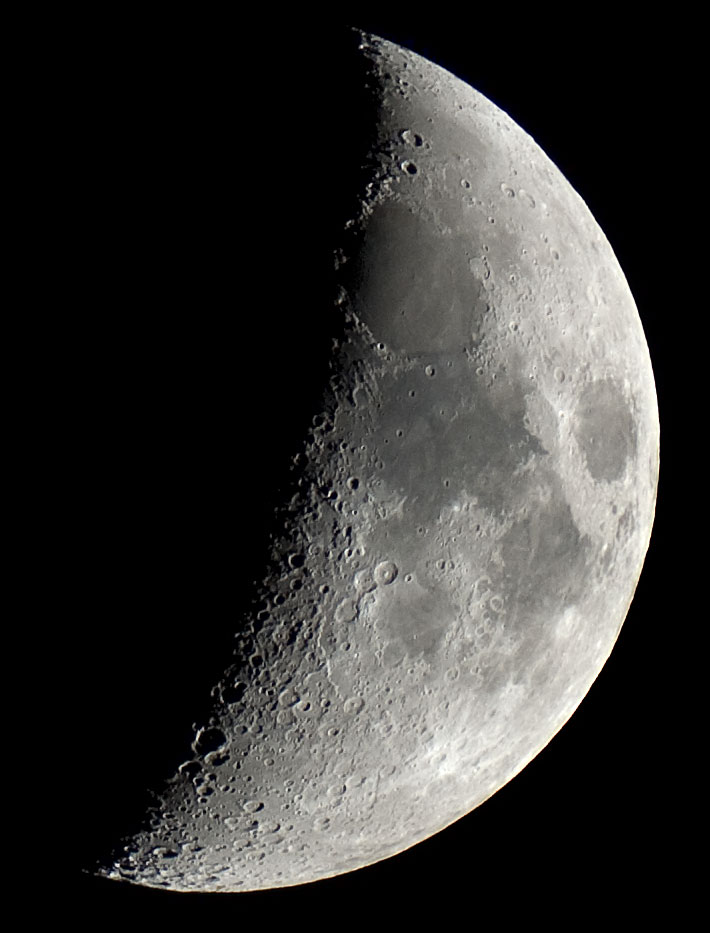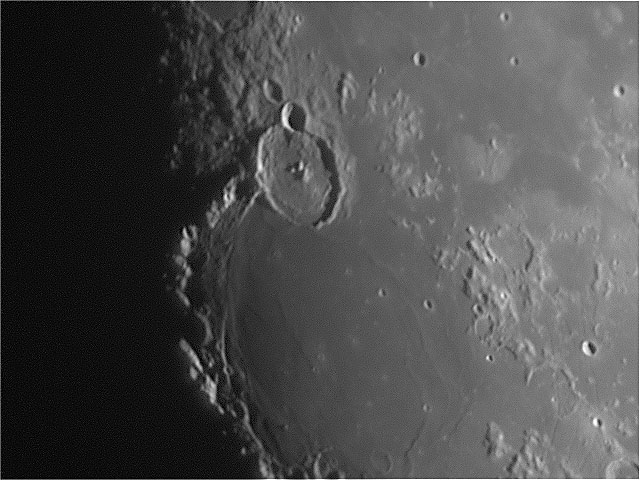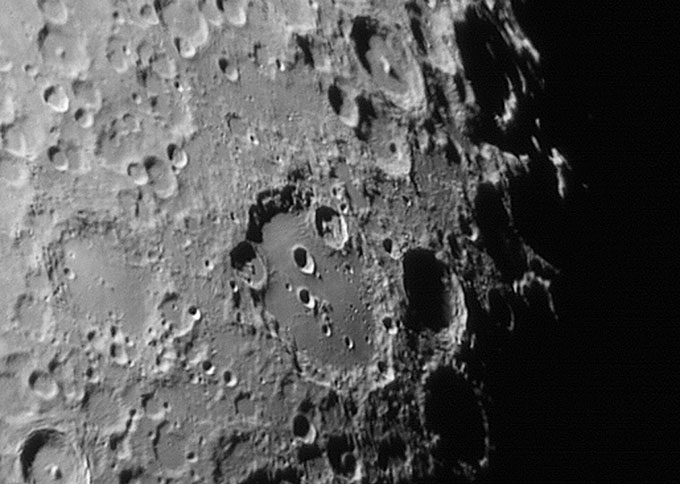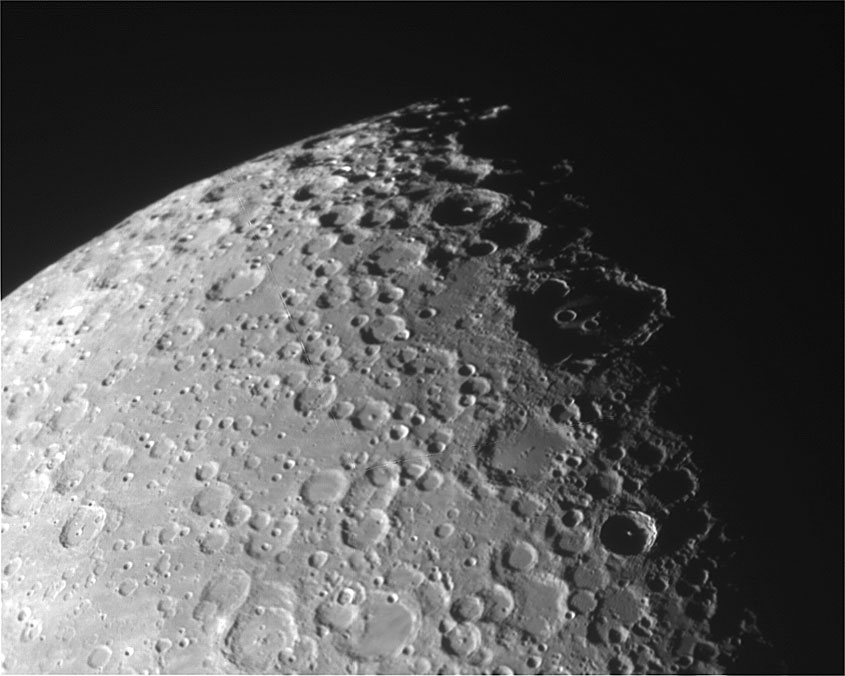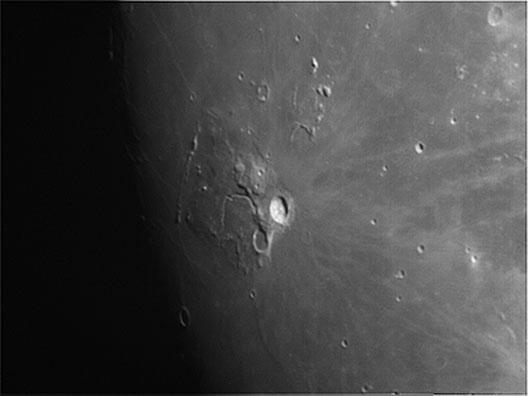Author Archives: philipp
A Ring around the Moon

An incoming layer of high cirrus clouds announces a change in the high-pressure weather pattern. The ice crystals in the clouds create a highly visible 22° ring of light, also known as a halo around the first-quarter moon.
Lens: Tokina AT-X 12-24 f/f
Camera: Nikon D200
Exposure: f/4 15s ISO 200
Date: 12th February 2011
NGC 4565
Move your mouse over the image to see annotations for some galaxies.
A larger version of this image which has been annotated with AVM headers can be opened in Microsoft WWT:ngc4565_150mm.jpg
|
Telescope:
|
150mm f/5 Newtonian, Baader MPCC Coma Corrector |
|
Camera
|
Nikon D200 |
|
Exposure:
|
4x300s, ISO 800 |
|
Date:
|
18th, April 2009 |
|
Processing:
|
Preprocessing (Dark, Flat & Bias correction), Alignment & stacking in IRIS, histogram adjustment curves, color correction in Photoshop. |
From Clavius to Schiller
This is a two-frame mosaic taken with a DMK21 camera and an Astro-Professional 80mm ED refractor:
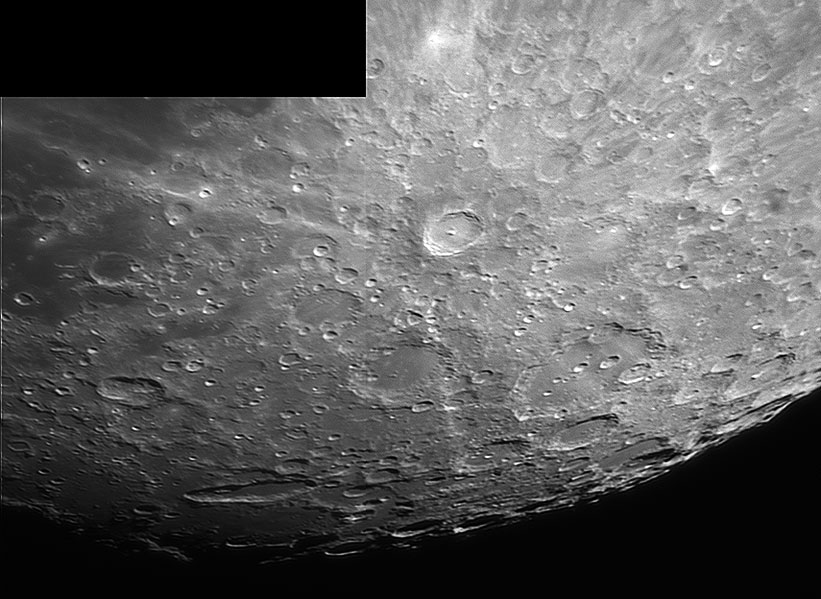
The very obvious crater in the middle of the mosaic is Tycho, it is relatively young and therefore the ejecta rays can still be seen brightly across the lunar landscape. Please note the dark area directly around Tycho which is also caused by ejecta of the impact.
To the lower right is the beautiful crater Clavius which has a nice curve of smaller craters on the floor. To the lower left you can see the very elongated crater Schiller which was produced by an oblique impact. Read More
From Tycho to Rümker
These images were taken on the 7th of April 2009 using my 150mm Newtonian telescope with a 2x Barlow lens, using a DMK21 camera:
Ariadaeus Rille
Today I took the first lunar images using my 80mm ED refractor, this is a 100% crop from an image I shot with my Nikon D200:
Gassendi, Clavius & Schiller
After showing Venus, M45, M42, Saturn and the moon to my in-laws I stayed on the roof for a little longer and took some AVIs using our club’s new DMK camera. I used my 150mm f/5 Newtonian telescope with a 2x barlow and a 90° prism (this gives about 2,7x). Again I had big troubles focusing because of my wobbly Super-Polaris mount.
Crater Gassendi and Mare Humorum:
Clavius, Kopernikus with a 110mm Schiefspiegler
110mm Schiefspiegler and QHY5 (ALCCD5)
1st Quarter moon with QHY5 camera
All images on this page were taken with a QHY5 (ALCCD5) camera using my 150mm Newtonian telescope.
Aristarchus and Schiller with the QHY5 (ALCCD5)
A 2x barlow lens and a right angle prism were used to increase the effective focal length. The resulting focal length was about 2000mm.
For each image, about 200pictures were processed using the Registax software.
